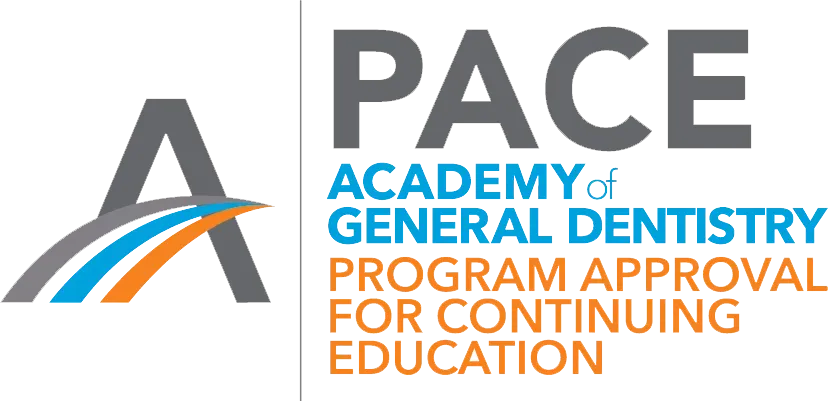
hands-on dental ce
A Closer Look at Dental Continuing Education
In the ever-changing dental world, staying sharp with ongoing education isn't just smart—it's downright necessary. Let's chat about why it matters and whether getting your hands dirty beats listening to lectures.
Why Continuing Education in Dentistry Matters
Dentistry's got new tricks up its sleeve every day, and you gotta know them to keep ahead and make your patients smile brighter. Continuing education helps us learn nifty techniques, boosting our game and keeping folks who sit in our chairs feeling well cared for. Take the latest buzz in sedation or wisdom tooth extraction—master these, and you've got a solid edge.
CE isn't merely about getting better with a scalpel. It's about brimming with self-assurance too. Dr. Mark Davis gets this; he's on a mission to handle more procedures personally, bypassing the wave-off to specialists, which does wonders for his practice’s bottom line. Whether you're picking up IV sedation or knocking out pesky molar extractions, regular learning is your ticket to handling the heat.
What Modern Dentists Want: Hands-On vs. Lecture-Only CE
Picking a CE course isn't just eeny, meeny, miny, moe. You gotta know what's what between hands-on action and snooze-inducing lectures.
FeatureHands-On TrainingLecture-Only CoursesReal-Life LearningYes—patients includedNada—just booksConfidence BoosterBig timeSlimGet Your Skills ONStatLater—maybe?Stay Awake FactorHighMehWalking Away SmarterOh yeahKind of
Hands-on workshops are like boot camps on steroids. Tackle stuff like IV sedation and tricky extractions alongside the big healthcare honchos. It's learning by doing, and it's invaluable when you're facing real people with real teeth.
Lecture-heavy courses? Sure, they dive into the basics—great if you're new, but you might find yourself scratching your head when it's time to actually do stuff.
For dentists like Dr. Mark Davis, itching to keep more procedures in-house, hands-on practice is where it's at. It beats the pants off of theory-heavy sessions and hits home where it counts—those big-ticket procedures and confidence gas tanks.
For deeper insights into sedation's role in everyday dental gigs, check out our pieces on debunking GPs' top sedation qualms and the hush-hush reason why your patients crave sedation.
When dental pros wise up to the value of continuing education and pick the format that hits the bullseye for them, they’re way better equipped to handle not just what patients need but what they expect.
Understanding Hands-On Dental CE
Benefits of Hands-On Training
Hands-on dental CE (Continuing Education) is like moving from theory to action. Instead of just soaking up lectures, you get your hands dirty. By jumping into real-world scenarios, dentists can hone their skills and gain the confidence to handle tough cases with finesse.
Here's what makes hands-on training a game-changer:
Realistic Practice: Work on real patient simulations for an authentic experience that mirrors what you'll face every day.
Skill Development: Practice makes perfect, especially with a pro guiding your moves.
Immediate Feedback: No waiting for critiques. Experts are right there to keep you on track.
Increased Retention: Because doing beats listening, the lessons stick longer.
Take Mark Davis, a general dentist wanting to push his boundaries. He’ll find this hands-on approach packs a punch in expanding his skills.
Real-World Application: Learning Through Practice
When dentists like Dr. Mark Davis dive into hands-on practice, they're not just learning – they're preparing for the real deal. It's the bridge that connects knowing with doing. They face diverse challenges head-on, armed with both brainpower and skill.
Here's what hands-on dental CE brings to the table:
Exposure to Real Cases: Get up close with patient scenarios that reflect your daily grind.
Confidence Building: Repeat the hard stuff until it feels easy, ready for anything.
Application of Knowledge: Marry what you know with what you do, making everything click.
Enhanced Problem-Solving: Tackle real problems, sharpen your critical thinking, and find solutions that work.
Training MethodPerksHands-On Dental CERealistic practice, skill enhancement, quick feedback, longer retentionLecture-Only Dental CETheory-heavy, less interactive, not much hands-on time
Curious to know more? Check out our resources on the perks of hands-on training and understand why sedation matters to patients.
Exploring Lecture-Only Dental CE
As dentists, we always wanna up our game, right? So, we dive into the ocean of continuing education (CE). Lectures are a dime a dozen, but they don't cut it when it comes to the hands-on stuff.
Limitations of Lecture-Only Formats
Lecture-only CE is all about theories and info dumps via presentations, slides, and chit-chat. But, let’s face it, they don’t fare too well when it comes to real-life scenarios like extractions or getting your hands dirty with sedation.
Lacking the Real Feel: It's one thing to hear how a technique works and another to do it yourself. Without that hands-on practice, confidence takes a back seat.
Memory Lane is Short: Just listening? Good luck remembering much. It's like a sieve; only practice makes the info stick.
Passive Mode On: They're giving a monologue, and we're just nodding along. But doing stuff? That's where the real learning kicks in.
Feedback: Missing in Action: You can't fix what you don't know is broken. Real-time hands-on sessions mean getting those tweaks when you need ‘em most.
Thinking of a CE experience that's more than talk? Look for the ones that roll up their sleeves with practical bits. It makes learning a whole different ball game.
Theoretical Knowledge vs. Practical Experience
Sure, knowing your stuff is cool, but doing it? That's where the magic's at. Let's break it down real easy:
AspectTheoretical KnowledgePractical ExperienceHow You LearnListening and watchingGetting your hands dirtyWhat You RememberIn one ear, out the otherSticks with you 'cause you did itBuilding SkillsMostly in your headReal skills from real actionFeeling ConfidentJust theoryBoosts from real work with patientsFixing MistakesRare chancesQuick fixes when you're in the zone
Lectures help us catch the drift on complex ideas but pairing them with actual practice? That turns our book smarts into real-world skills.
Check out our take on why getting practical might just transform your gig. Dive into our guides on the #1 objection GPs have to doing sedation — and why it’s based on old info and catch why your patients want you to offer sedation — and what they’re not telling you to see how offering these skills can level up your practice.
Making the Right Choice
Factors to Consider When Choosing a CE Format
Choosing between hands-on and lecture-only dental continuing education (CE) is akin to picking the right tool for a job: it depends on what your needs and goals are. This decision can be crucial, especially if you plan to tackle advanced procedures like IV sedation and third molar extractions.
Practical Experience vs. Theoretical Knowledge
Lecture-only CE courses can flood you with information, but hands-on CE is where you roll up your sleeves and get into the nitty-gritty. Picture Dr. Mark Davis, who could use a little hands-on practice to feel more sure of himself when it comes to tricky extractions and sedation techniques.
Cost and Time Investment
Sure, lecture-only courses might save you a few bucks and some time. But if you dive into hands-on CE, expect a deeper involvement, often with real patients. It's pricier and takes more time, but the payoff is fewer referrals and more tasks handled right in your office.
Learning Environment
Some people dig a classroom vibe; others crave more dynamic, practical settings. Dr. Mark Davis, itching for real-patient interaction, would likely flourish with hands-on practice.
Comparison FactorHands-On CELecture-Only CEExperiencePracticalTheoreticalCostHigherLowerTime CommitmentMoreLessLearning StyleInteractiveClassroom
Evaluating Your Learning Style and Goals
To pick the right CE format, it's essential to understand how you learn and what you want out of your career. Here’s how to sort it out:
Assess Your Learning Style
Figure out how you hit the books:
Interactive Learner: Loves to dive into hands-on activities. Go for the hands-on style.
Visual/Verbal Learner: Enjoys lectures and books. Lecture-only might work just fine.
Identify Your Goals
Your career ambitions dictate your choice of CE:
Expand Clinical Scope: If keeping things in-house and cutting down on referrals is your game, think about hands-on training.
Build Confidence: For those tricky procedures, real-patient experience can be a confidence booster.
Immediate Implementation: Looking to add new services pronto? Hands-on CE might just be your ticket.
For Dr. Mark Davis, who aims to boost productivity without extending working hours or hiring more folks, and who feels that sitting through lectures hasn't quite cut it, hands-on training probably offers more bang for his buck.
Questions to Guide Your Choice
Do I need some real-world practice to handle new techniques with confidence?
How soon am I thinking of rolling out new procedures in my practice?
What's the budget and time I can commit to CE?
How well does each format's environment suit my learning style?
Need more advice on knocking down objections to advanced CE? Check out our article on the #1 objection GPs have to doing sedation — and why it’s based on old info. Plus, explore why your patients might secretly crave sedation services in why your patients want you to offer sedation — and what they’re not telling you.
Realizing Your Full Potential
Building Confidence Through Hands-On Practice
Dentists like Dr. Mark Davis know that nothing beats getting their hands dirty to boost confidence in tackling new procedures. Ditching the books for some hands-on practice lets them work with actual patients, turning their classroom smarts into real-life skills. It's like taking the training wheels off a bike—you get the hang of it by doing. This approach builds muscle memory and skill that books just can't teach.
In many courses, a sweet 2:1 student-to-instructor ratio means you get a thumbs up (or thumbs down) right then and there. Personalized attention means every question gets its day in the sun, and you leave with tricks up your sleeve you didn't even know you needed.
Training TypeInteraction LevelPersonalized FeedbackPractical ExperienceHands-OnHighHighLoadsLecture-OnlyLowLowZero
When dentists have the chance to practice with real patients, they level up in confidence, ready to tackle even the trickiest cases without breaking a sweat. This hands-on experience lets them smoothly integrate new techniques into their practice. Curious about easing those common sedation objections? Check out this piece on why docs might hesitate about sedation and why they shouldn't be so cautious.
Achieving Clinical Excellence: The Path to Mastery
Reaching the top of your game isn't just about acing tests or snagging certifications. It's about mastering the nuts and bolts that can seriously lift patient care and broaden a dentist's toolbox. Diving into hands-on training gives you the kind of know-how that sticks—after all, practice makes professional.
Hands-on courses let dentists repeatedly tackle things like extractions and sedation on real patients until it feels like second nature. This routine is where lecture-based courses often fall short, as book smarts don't always mean practical ability.
These trainings also stress the power of patient rapport and comfort, super key in sedation and extractions. Dentists pick up the skills to put patients at ease, manage what they're expecting, and deal with any curveballs real life might throw. This well-rounded approach preps them to dish out top-notch care.
For dentists aiming to hit their peak and keep those valuable cases closer to home, sinking some time into hands-on learning could be a game-changer. With firsthand experience and an all-new confidence, they're no longer referring out those valuable cases. And if you're wondering why patients are rooting for you to get into sedation, check out our article on your patients' unspoken desires for sedation.




Facebook
Youtube
Instagram